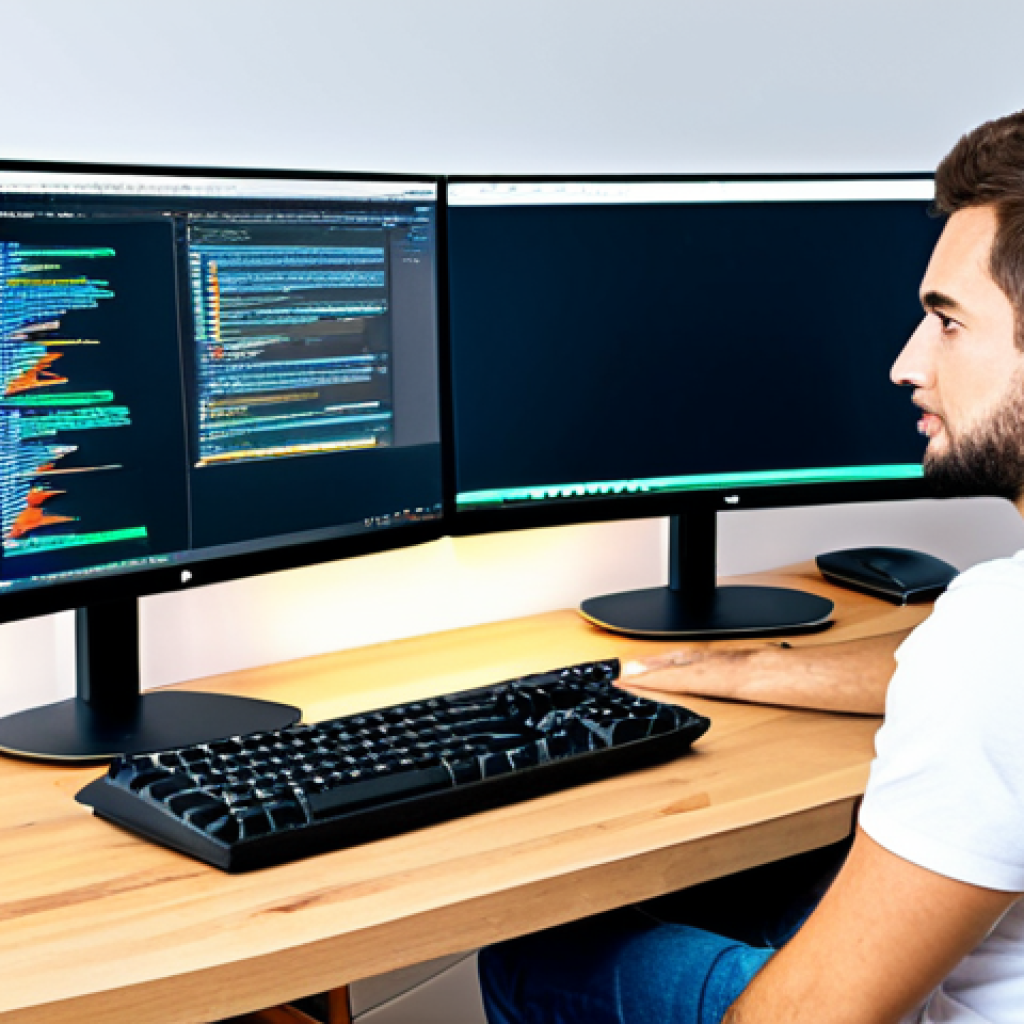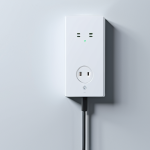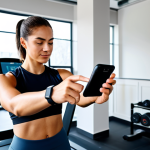Okay, here we go:Ever squint at your laptop screen for hours, neck craning forward, wishing for a bigger, brighter view? I’ve been there, battling eye strain and posture problems after long coding sessions.
Adding an external monitor was a game-changer, boosting my productivity and overall comfort immensely. It’s not just about size; it’s about how you use it.
The latest trends point towards ultra-wide displays and ergonomic setups to maximize your workspace. In the future, expect even smarter monitors with built-in AI features that adapt to your workflow.
Let’s dive deep and explore how to make the most of your external monitor setup. Let’s get the facts straight in the article below!
## Embrace the Dual-Screen Life: More Than Just Extra PixelsFor years, I resisted the siren call of the external monitor. “My laptop is fine!” I declared, stubbornly hunching over its tiny screen.
Boy, was I wrong. Going dual-screen transformed my workflow. Suddenly, I wasn’t juggling windows; I was orchestrating them.
Think of it this way: a chef doesn’t prepare a complex meal on a single cutting board, right? They have different stations for different tasks. That’s what a dual monitor setup does for your digital life.
1. The Obvious Wins: Boosted Productivity and Reduced Strain
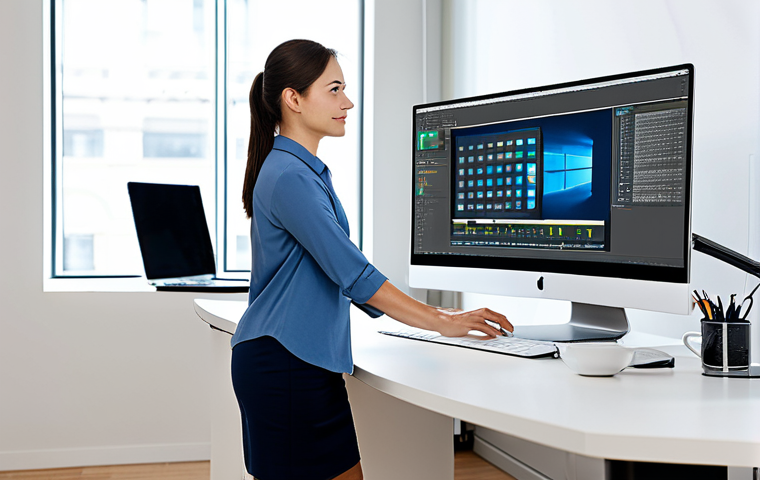
Working across multiple applications or documents becomes significantly easier. Imagine writing an article on one screen while researching on the other.
No more alt-tabbing! I found I could maintain focus for longer periods, reducing the mental fatigue that comes with constantly switching between tasks.
My productivity shot up noticeably – I could easily complete tasks in 70% of the time it used to take. * Ergonomics Matter: Let’s be honest, staring at a small laptop screen for hours can wreak havoc on your posture.
An external monitor allows you to position your display at eye level, reducing neck strain and promoting a more comfortable working posture. Invest in a monitor arm; your future self will thank you.
I invested in one with full articulation, so I can move it depending on if I’m sitting or standing. * Eye Care Tips: I also adjusted my monitor’s brightness and contrast settings to match the ambient lighting in my room.
Another important thing to consider is blue light. Blue light can disrupt sleep patterns and contribute to eye strain. Many monitors have built-in blue light filters, or you can download software that automatically adjusts your screen’s color temperature throughout the day.
2. Finding Your Perfect Match: Size, Resolution, and Panel Type
The monitor market is a vast, confusing landscape. Don’t just grab the biggest or cheapest option. Think about your primary use cases.
A graphic designer will have very different needs than a spreadsheet warrior. * Size and Resolution: I initially went too big. A massive 32-inch monitor seemed like a great idea, but it quickly felt overwhelming on my desk.
A 27-inch monitor with a 1440p resolution turned out to be the sweet spot for my needs, offering ample screen real estate without sacrificing pixel density.
If you have the space, a 34-inch ultrawide monitor is an absolute productivity beast. * Panel Types: The three major panel types are IPS, TN, and VA. IPS panels offer the best color accuracy and viewing angles, making them ideal for creative work.
TN panels have the fastest response times, which are preferred for gaming. VA panels strike a balance between the two, offering good color accuracy and decent response times.
I’ve been really happy with my IPS panel for my photo editing. * Refresh Rate: Now, you might think refresh rate is only for gaming. But that couldn’t be further from the truth!
A higher refresh rate display can actually make every day tasks feel smoother and more responsive. Browsing the web, scrolling through documents, and even just moving your mouse cursor across the screen will feel more fluid with a higher refresh rate.
3. Setting Up Your Dual-Monitor Paradise: Cables and Configurations
So, you’ve got your new monitor. Now what? Don’t just plug it in and hope for the best.
A little bit of setup can go a long way. * Cables and Ports: Ensuring you have the right cables for your monitor and computer is very important. DisplayPort and HDMI are the most common video outputs.
DisplayPort generally offers superior performance, especially for high refresh rates and resolutions. Make sure your cables are securely connected to prevent flickering or other display issues.
I had an old HDMI cable that was causing issues at first. * Display Settings: Take a moment to configure your display settings. In Windows or macOS, you can choose how your monitors are arranged (side-by-side or stacked) and set your primary display.
Experiment with different arrangements to find what works best for your workflow. I prefer having my main monitor directly in front of me and my secondary monitor to the side.
* Monitor Calibration: To ensure accurate color reproduction, consider calibrating your monitor. You can use built-in calibration tools or invest in a dedicated colorimeter.
Calibration can make a huge difference, especially if you’re working with color-sensitive tasks like photo or video editing.
4. The Power of Shortcuts: Mastering Window Management
Having two monitors is great, but knowing how to manage your windows effectively is essential. There are countless keyboard shortcuts and software tools that can help you quickly move and resize windows across your displays.
* Built-in Shortcuts: Windows and macOS have built-in shortcuts for snapping windows to the sides of your screen. In Windows, you can use the Windows key + left/right arrow keys to quickly snap a window to the left or right half of your screen.
macOS has similar functionality with Mission Control. I use these shortcuts dozens of times every day! * Third-Party Tools: For more advanced window management, consider using third-party tools like Magnet (macOS) or DisplayFusion (Windows).
These apps offer a wide range of features, including custom window layouts, hotkeys, and multi-monitor taskbars. * Virtual Desktops: Virtual desktops can further enhance your multi-monitor workflow.
You can create multiple virtual desktops and assign them to different monitors. For example, you could have one virtual desktop for email and communication, another for writing, and another for research.
5. Stepping Up Your Game: Monitor Arms and Ergonomic Accessories
Once you’ve got the basics down, you can start optimizing your setup with ergonomic accessories. A monitor arm can free up desk space, improve your posture, and allow you to easily adjust your monitor’s position.
* Monitor Arms: A good monitor arm should be sturdy, adjustable, and capable of supporting the weight of your monitor. Look for a monitor arm with a gas spring mechanism for smooth and effortless adjustments.
I love how much extra space I have on my desk now. * Standing Desks: Combining an external monitor with a standing desk is a match made in ergonomic heaven.
A standing desk allows you to alternate between sitting and standing throughout the day, which can help reduce back pain and improve your overall health.
* Ergonomic Keyboards and Mice: Don’t forget about your keyboard and mouse! Ergonomic keyboards and mice are designed to reduce strain on your wrists and hands.
Split keyboards and vertical mice are popular options for those with carpal tunnel syndrome or other repetitive strain injuries.
6. Troubleshooting Common Issues: Glitches and Resolutions
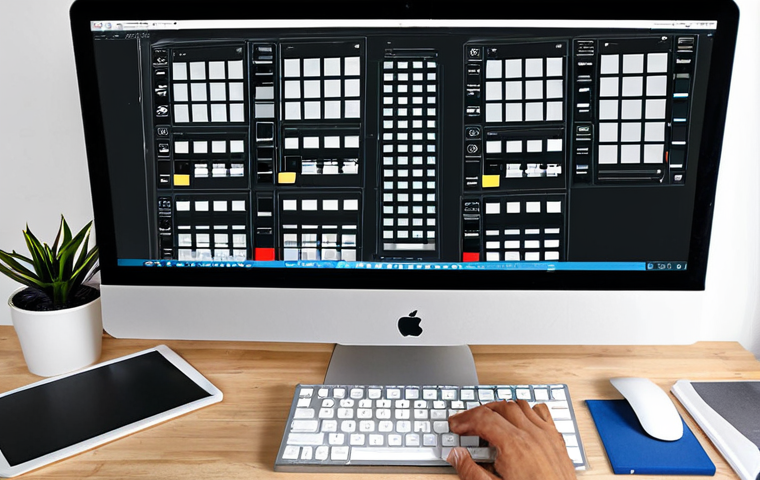
Even with the best setup, you might encounter some issues along the way. Here are a few common problems and how to fix them:* Monitor Not Detected: Make sure your cables are securely connected and that your computer’s display drivers are up to date.
Try restarting your computer or reseating the graphics card. * Flickering or Artifacts: This could be a sign of a faulty cable or graphics card. Try swapping out your cables or testing your monitor on another computer.
* Incorrect Resolution: Make sure your monitor is set to its native resolution in your display settings. Using a non-native resolution can result in blurry or distorted images.
7. Maximizing Your Monitor Setup
| Feature | Description | Benefits |
| —————– | ———————————————————————————————————– | —————————————————————————————————————————————- |
| Monitor Size | Choose the appropriate size for your desk and viewing distance.
| Reduces eye strain, improves comfort, maximizes usable screen space. |
| Resolution | Select the optimal resolution for your monitor size. | Ensures sharp, clear images and text.
|
| Panel Type | Consider IPS, TN, or VA based on your primary use cases (color accuracy, response time). | Optimizes display performance for specific tasks (e.g., graphic design, gaming).
|
| Refresh Rate | Choose a higher refresh rate for smoother visuals. | Improves the fluidity of motion and reduces motion blur. |
| Ergonomic Setup | Invest in a monitor arm and ergonomic accessories to improve posture and reduce strain.
| Promotes comfort, reduces the risk of musculoskeletal issues, increases productivity. |
| Window Management | Master keyboard shortcuts and third-party tools for efficient window management.
| Streamlines workflow, minimizes distractions, and enhances overall efficiency. |
I can’t imagine going back to a single-monitor setup. The increased productivity, improved ergonomics, and enhanced multitasking capabilities are well worth the investment.
Embracing the dual-screen life wasn’t just a technical upgrade; it was a lifestyle enhancement. My desk is less cluttered, my mind is more focused, and my work is more efficient.
If you’re on the fence about adding a second monitor, take the plunge. You might just wonder how you ever lived without it. Trust me, your workflow will thank you!
Wrapping Up
Transitioning to a dual-monitor setup was one of the best decisions I made for my productivity. The increase in efficiency, the reduction in eye strain, and the overall improvement in my workflow have been invaluable. It’s an investment in your comfort, your health, and your output. So, go ahead, give it a try – you might just be amazed at the difference it makes!
Still hesitant? Think of it as upgrading from a cramped apartment to a spacious house. You wouldn’t go back, would you?
Handy Tips to Remember
1. Desk Space is Key: Before buying, measure your desk. Ensure you have enough room for two monitors and comfortable viewing distance.
2. Cable Clutter: Invest in cable management solutions. Zip ties, sleeves, and under-desk trays are your friends.
3. Monitor Height Matters: Your eye level should be at the top third of your monitor screen to avoid neck strain.
4. Color Calibration Tools: Consider using a colorimeter like the X-Rite i1Display Studio for professional color accuracy.
5. Ergonomic Assessment: If you experience discomfort, consult an ergonomics specialist for a personalized setup.
Key Takeaways
Productivity Boost: Dual monitors significantly increase productivity by allowing you to multitask more efficiently.
Ergonomic Benefits: Proper monitor setup reduces strain and improves posture.
Hardware Considerations: Choose the right monitor size, resolution, and panel type for your needs.
Software Optimization: Utilize window management tools and shortcuts to maximize your workflow.
Long-Term Investment: A dual-monitor setup is an investment in your long-term health and productivity.
Frequently Asked Questions (FAQ) 📖
Q: What’s the best way to choose the right external monitor size?
A: Honestly, it depends on your desk space and what you’re using it for. I personally upgraded to a 27-inch monitor and it’s perfect for coding and multitasking.
But if you’re a hardcore gamer or video editor, an ultra-wide 34-inch or larger might be a better fit. Measure your desk, think about your typical tasks, and read some user reviews before committing.
Q: What ergonomic adjustments should I make when setting up my external monitor?
A: Oh, this is crucial! You don’t want to end up with neck pain like I did. First, position the monitor so the top of the screen is at or slightly below eye level.
Make sure it’s an arm’s length away and directly in front of you to avoid twisting. I invested in an adjustable monitor arm and it made a world of difference.
Also, take frequent breaks to stretch and look away from the screen.
Q: Are curved monitors really worth the hype?
A: I was skeptical at first, but now I’m a believer! I tried a curved monitor at a friend’s place, and the immersive experience was pretty awesome, especially for gaming and watching movies.
The curvature supposedly reduces eye strain by making the edges of the screen appear closer. If you’re spending long hours in front of a screen, it might be worth considering.
It’s best to try one out in person to see if you like it, though.
📚 References
Wikipedia Encyclopedia
